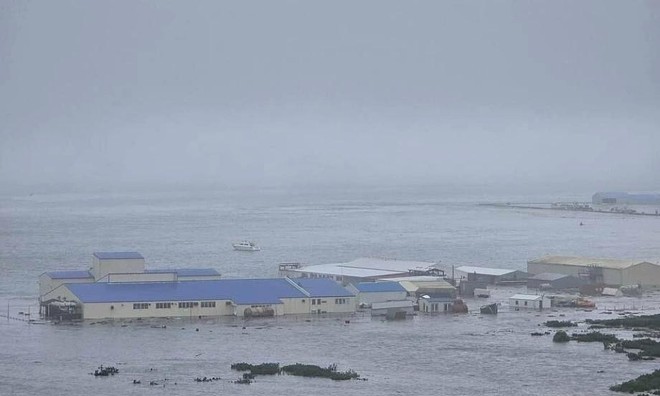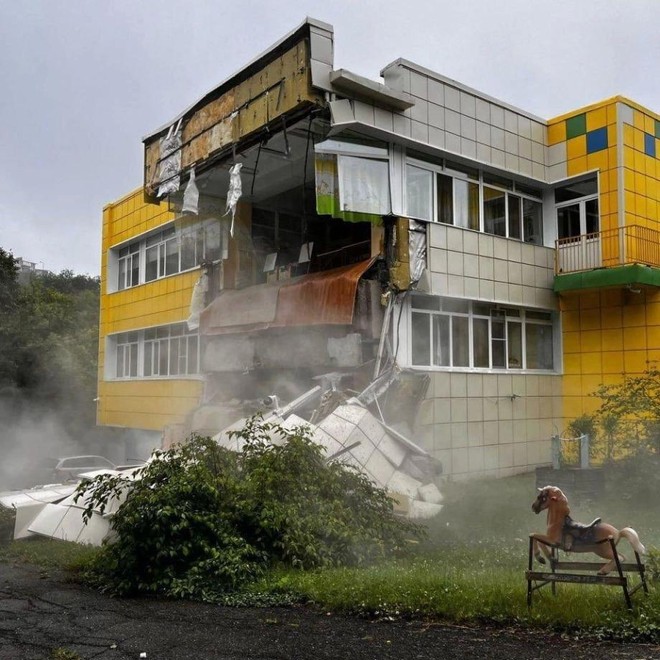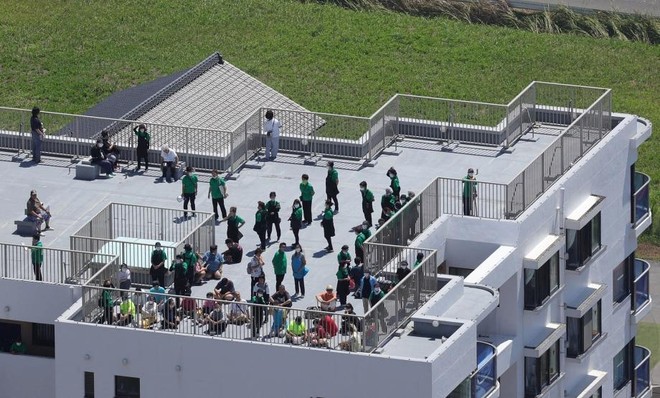According to the Geophysical Department of the Russian Academy of Sciences, the earthquake was recorded at around 11:30 a.m. (local time) on July 30, about 136 km southeast of Petropavlovsk-Kamchatsky. The United States Geological Survey (USGS) later assessed the earthquake's magnitude at 8.7 on the Richter scale.

“The tsunami could reach 32 cm in the Aleutsky district, 20 cm in the Ust-Kamchatsky district and 6 cm in the Petropavlovsk-Kamchatsky district,” the Kamchatka Emergency Situations Service said.
“The wave height is not large, but it is necessary to move away from the shore. In any case, no one is allowed to approach the shore to observe the tsunami - this can be dangerous,” the agency advised.

Kindergarten on Kamchatka Peninsula damaged by earthquake.
Residents reported strong shaking during the initial aftershocks, causing furniture to fall and car alarms to go off. Video from the scene showed the wall of a kindergarten in Petropavlovsk-Kamchatsky collapsing, although no casualties have been confirmed.

People go to the rooftop of a high-rise building in Oamishirasato city, Chiba prefecture, Japan to guard against tsunami.
In the Kuril Islands, authorities issued a tsunami warning after seismic activity near Severo-Kurilsk, on Paramushir Island. Sakhalin Governor Valery Limarenko confirmed that evacuations were underway in the area as a precaution. The Japan Meteorological Agency issued a tsunami warning for large areas along Japan's Pacific coast, stretching from Hokkaido to Kyushu. Authorities have urged people in coastal areas to be vigilant and to evacuate low-lying areas if necessary.
Indonesia's seismological agency warned that tsunami waves of up to 0.5 meters high could hit some areas in the country, including Papua, North Maluku and Gorontalo provinces, on the afternoon of July 30.
Meanwhile, the Philippine Seismological Agency said coastal areas bordering the Pacific Ocean could see tsunami waves of up to 1 meter high. The agency advised people to stay away from the shore./.